NIMBY Rebuttals
The cruel irony of NIMBY pastoralism is that it trades real, living natural landscapes for the airy ghosts of a dead one
-- Parker
There are many justifications given for opposing housing. Below you’ll find some common and flawed arguments and rebuttals to them. This is offered primarily for those curious about arguments they have heard against housing and who may be unaware of the evidence against each of these arguments. Anti-housing arguments are often rhetorical rather than factual, picked for their ability to persuade rather than inform. As we’ll see even a mild exploration of the data around housing shows that more housing makes homes more affordable while more public transit options and choices beyond car commuting makes getting around faster, more pleasant, and more equitable.
Economic
Housing prices / Rent will continue to cost the same or increase
This is simply false. Empirical evidence from Minneapolis to Germany show that building more housing lowers costs both for renting and owning.
Minneapolis saw one of the largest recent decreases in both housing and inflation in general as a result of their choice to build more housing. They did this by eliminating exclusionary single family zoning and providing rental assistance and subsidies.
In May, the Twin Cities became the first major metropolitan area to see annual inflation fall below the Federal Reserve’s target of 2%. Its 1.8% pace of price increases was the lowest of any region that month. That’s largely due to a region-wide push to address one of the most intractable issues for both the Fed and American consumers: rising housing costs.
Source: Bloomberg “First American City to Tame Inflation Owes Its Success to Affordable Housing” / archive.ph mirror
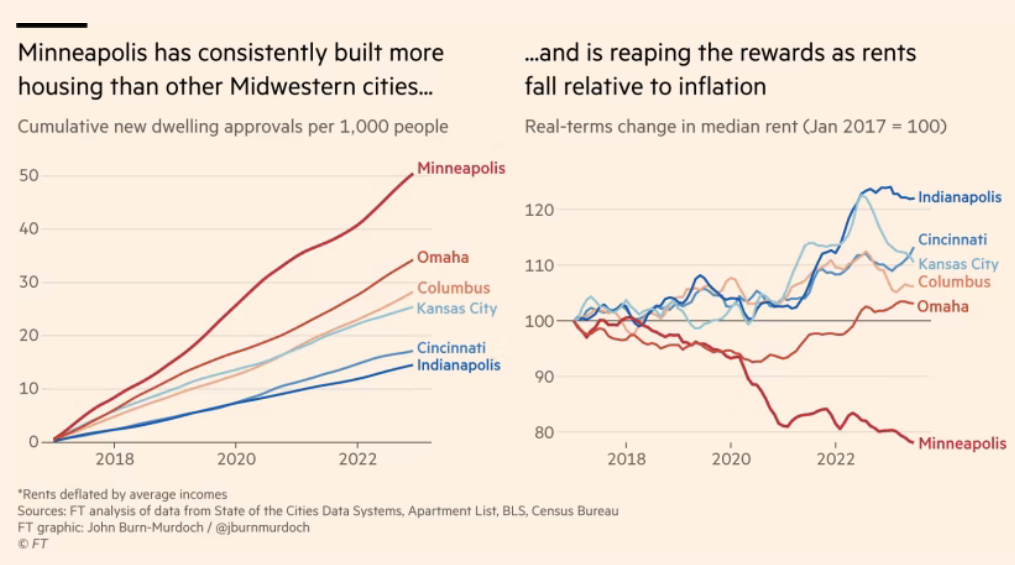
Source: FT.com “Repeat after me: building any new homes reduces housing costs for all” / archive.ph mirror
Happily Austin is not far behind, particularly among renters, as it has been encouraging the development of more apartment buildings which have overall lowered Austin rents by over 5% since last year; a reduction that far exceeds almost any other city in the US. To say nothing of US cities where rents continue to skyrocket due to restricted supply such as Madison, WI and Odessa, TX where rents are up by 9-14% over last year!
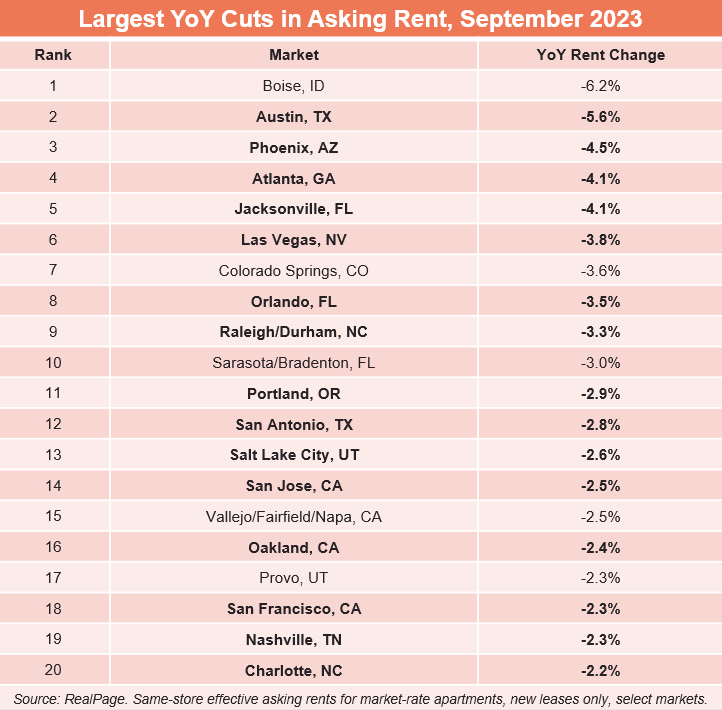
Similarly home ownership costs have stayed low in Minneapolis, Houston, and other cities due to more relaxed zoning. Houston for example has small minimum lot sizes and no zoning for use which has resulted in their housing costs staying 17% below the national average despite being one of the largest cities in the US.

Source: Houston.org “Housing cost comparison”
More generally this is how capitalism works. When artificial constraints are removed from markets and supply is allowed to naturally increase this brings down costs for people. It’s not magic, it’s not something that works the opposite of every other resource, it’s subject to the same supply and demand forces.
However, not all housing affordability will or should be a result simply of market forces. In other cases we need our city to step in and ensure that the most in need have a safe, warm, and stable place to sleep every night, to engage with others, and to have friends over. All humans deserve this minimum of dignity and thankfully Austin has also implemented measures to help address this. You can read more about theses measures in the Affordable Housing section.
Property taxes will go up
As you can see in the above topic if property values come down then so will property taxes as they’re a function of property values. However we have empirical evidence directly for this as well. For example Houston’s median property tax bill is $3,838 as of 2021 while Austin’s during the same period was $6,517 (Source: Taxfoundation.org; 2021 data at county-level). Effectively double the tax in large part due to restricted supply that has only started to ease in recent years.
Similarly in Connecticut towns that issued the most housing permits had their residents spending $4,900 less in property taxes than towns issuing few permits.
Cities cost too much
Dense city centers create wealth in a city while car-centric suburbia destroys it.
This section/topic is incomplete. If you have some knowledge on this subject please help out by editing this page.
Infrastructure
No infrastructure is static and a building permit issued day 1 does not create a building on day 2. There are long lead times and many departments within the City of Austin who’s job it is to ensure infrastructure meets demand.
The roads can’t handle it
This is correct but in the wrong way. Car-centric roads have never and will never handle capacity as well as every other mode of transportation does. The answer to the question of what to do about road capacity is not to limit housing, encourage sprawl, and further environmental destruction through car dependence. The answer is to provide better more convenient modes of transit, to build people’s basic necessities close to where they live, and to stop spending so much of our lives literally dying in traffic.
Car dependence has resulted in yearly costs of:
- $26,000 of costs per household
- 40,000 deaths on US roads. 40,000 funerals. Countless devastated family members and friends
- 4,000,000,000 pounds of microplastics
The solution then is to build infrastructure for public transit, biking, and walking. Check those articles to learn more.
Did you know?
50% of all trips made in the US are 3 miles or less. These are easily reachable for most people with an e-bike or manual bike provided the infrastructure is available. Learn more.The water supply can’t handle it
Austin, like most every major city in the US, has a water department that produces plans to address water needs well into the city’s future and provides annual progress reports. Austin Water itself has a 100-year plan termed “Water Forward” that the department is using to ensure the city has enough water.
More specifically within Austin when it comes to concerns about water supply we see:
- Multi-family homes are much more water efficient than single family homes
- A large reduction in the number of gallons of water pumped per capita per day since 2008
- Water bills continuing to trend down relative to Austin’s Median Household Income
On the first point, single family homes contribute to water waste while multi-family homes are more efficient per capita. According to the US Census and data from Austin Water (2019-2020), single family homes use roughly 20% more water per capita than Multi-family homes. Single family homes are simply less efficient with our water resources than multi-family homes. The chart below shows that both single and multi-family homes each made up about half of the population Austin, yet there are large differences in their water consumption.
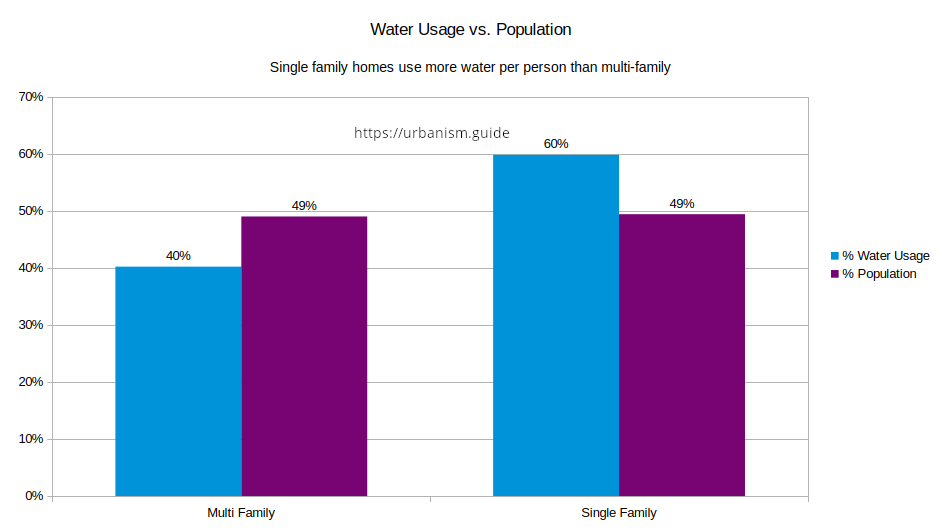
Sources: US Census 2019 Estimates, and Austin Water “Residential Water Consumption” data set (Most recently available 12 month period: 2019-2020)
According to the EPA
Outdoor water use accounts for 30 percent of household use yet can be much higher in drier parts of the country and in more water-intensive landscapesThe largest waste of water with single family homes is watering lawns full of bermuda grass and other non-native species that needs copious amounts of water to survive Texas summers. This is why we get notices to reduce lawn watering when Texas enters drought periods.
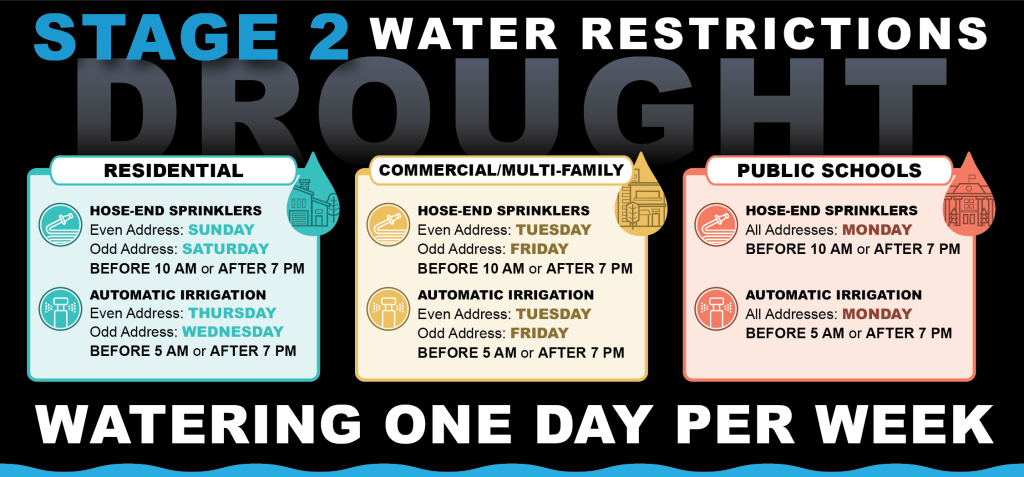
Source: Austin Water “Drought Response”
So while people may make unfounded claims that our water crisis will get worse with more density, we actually see that the opposite is true:
- That denser housing is much more efficient, while sprawl is more wasteful
- The solution to water concerns is not to ban housing but to restrict wasteful usage of our natural resources
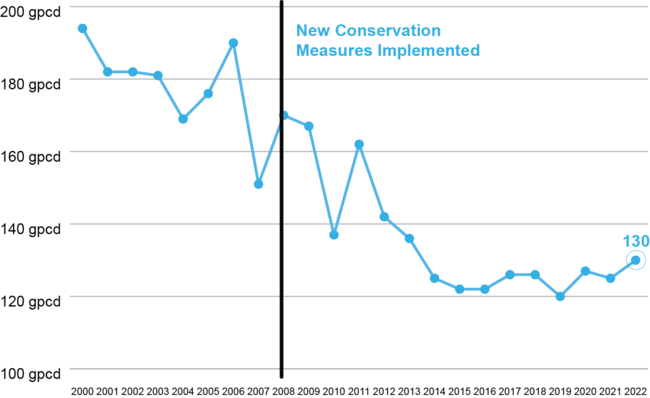
Austin Water “2022 Annual Progress Report”
The electric grid can’t handle it
This section/topic is incomplete. If you have some knowledge on this subject please help out by editing this page.
Environmental
Cities create heat islands
This section/topic is incomplete. If you have some knowledge on this subject please help out by editing this page.
Parking, large roads, and empty spaces create heat islands.
Cutting down a tree to build housing is environmental destruction
This depends on where you cut down the tree(s). In practical, relative terms, removing a handful of trees on private property in order to build housing within a city will always be significantly lower impact than clearcutting huge acres of trees to build more suburbia and highways. Places immediately outside the City of Austin have seen substantial tree cover loss as our surrounding hillside and forests are cut down in order to make way for sprawl. Along with fires, storm damage, and other contributors to tree cover loss; many of which have direct and indirect causes related to urban sprawl and human activity.
Below is the total tree cover loss since 2000 in Travis and surrounding counties that make up the Austin Metropolitan Statistical Area (MSA). Notably almost all of this loss is outside the City of Austin.
| County | Tree Cover Loss (kha) | Tree Cover Loss (square miles) |
|---|---|---|
| Travis | 8.2 | 31.7 |
| Williamson | 6.37 | 24.59 |
| Bastrop | 14.2 | 54.83 |
| Caldwell | 2.83 | 10.93 |
| Hays | 7.11 | 27.45 |
| Total | 38.71 | 149.5 |
While it is difficult to quantify the exact contribution of further suburban development and the repeated encroachment of our built environments on nature, it is apparent from the images below that clear cutting for suburbia has lead to substantial loss of tree cover.
This is not to say that trees aren’t important in cities. Trees are a vital component in any livable, walkable, and equitable city. Fortunately the City of Austin recognizes this and has a plan to increase the city’s tree canopy. Thus far tree canopy has increased from 30% in 2005 to 41% in 2022. Austin is gaining tree canopy; not losing it. Further the City of Austin has recognized that there is significant disparity in tree canopy between West and East Austin. Austin’s Community Tree Priority Map was created to address this inequity.
Tree canopy gains
The City of Austin has been gaining tree canopy since 2005. It’s now up to 41% and CoA will keep adding to it!Dense housing is bad for the environment
It should go without saying but people need a place to live. They will need homes regardless. So questions on environmentalism boil down to efficiency and where and how homes are built rather than if we should build. There is no option where we do not provide enough housing for people who need it.
So we have two overarching options: encourage urban sprawl, or encourage urban infill. In sprawl, as we practice today, our land development codes push where people live further and further out from work, school, recreation, family, and friends. Encouraging urban infill does the opposite, bringing the physical location of these things closer.
The data is clear that urban infill is better for the environment than sprawl. In 2018, researchers at California, Berkeley analyzed 700 cities and found that the single biggest impact that local governments can have on reducing greenhouse gas emissions is to increase urban infill (ie. housing in urbanized spaces). Mind you we are not talking about turning every city into the center of Manhattan. Simply locating housing closer to people’s needs and daily activities can have a massive impact.
Furthermore this study shows that urban infill in general is one of the biggest levers that local governments have in addressing climate change. Except for heating electrification all other local policies have little to moderate impact and depend on state and federal intervention alongside local government action. But not housing. Housing is the big lever for local governments. Austin is only getting hotter.
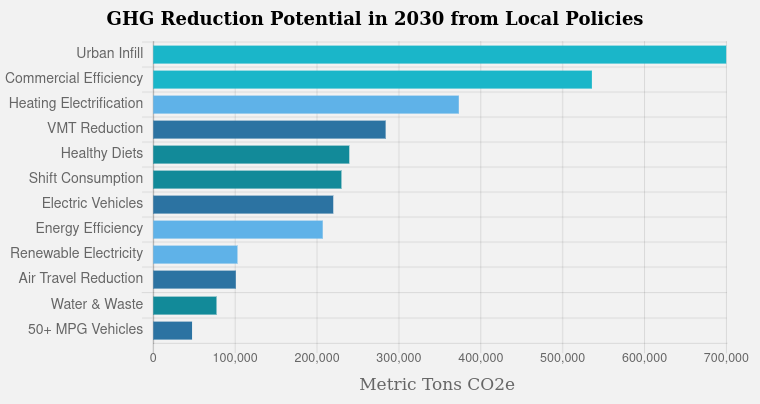
Source: University of California, Berkeley
This section/topic is incomplete. If you have some knowledge on this subject please help out by editing this page.
Conspiratorial
Anyone who disagrees with me is paid off by the real estate industry
There are many people who want housing, including 73% of Austin teachers who say they’re burdened by the cost of housing.
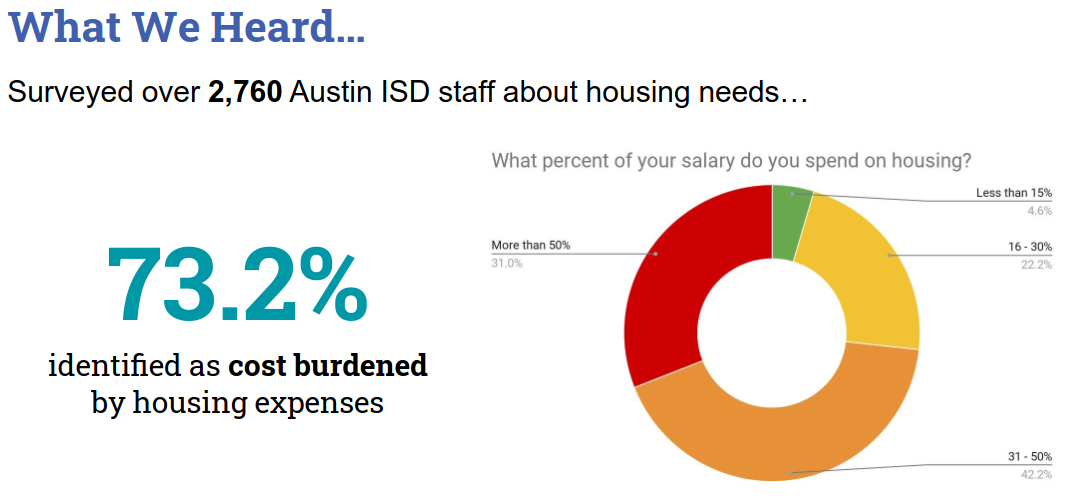
Source: Austin Independent School District “Rosedale Repurposing Update”
Living in pods, eating bugs, not allowed to leave our zone
Honey we just want to be able to walk to a store, a park, or let kids play outside safely. This isn’t Facebook nor the end times but it will be if we keep doing things the way we have been.








